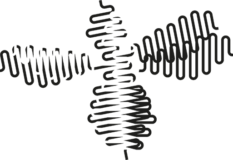Natuuroases
Van groot tot klein
Van bijen tot vlinders
Van tijdelijk tot permanent
Van bedrijf tot bedrijvenpark
Placemaking: maak impact met groen.
We weten dat het slecht gaat met de bijen. En dat is ook slecht voor ons. De oplossing ligt in een klein hoekje. Want bijen zijn al blij met een paar struiken en veldbloemen. Wij zien overal kansen voor projectontwikkelaars en gemeenten. Met grote en kleine natuuroases die we met liefde voor je aanleggen. Bijvoorbeeld op braakliggende terreinen, op daken van bedrijven, op gevels van appartementsgebouwen… op elke vierkante meter die je over hebt.



De groene paradijsjes van I Love Beeing
We brengen groen waar het grijs is. Door meer natuur aan te leggen in de bewoonde wereld.
Waar zowel mens als dier van kan genieten, zodat ons land beetje bij beetje meer biodiversiteit krijgt. Wij hebben een luisterend oor voor jullie stakeholders en maken 3 van 1+1. Elke stukje groen is een lust voor het oog en een mooie kans om de populaties van bijen en vlinders te stimuleren.










